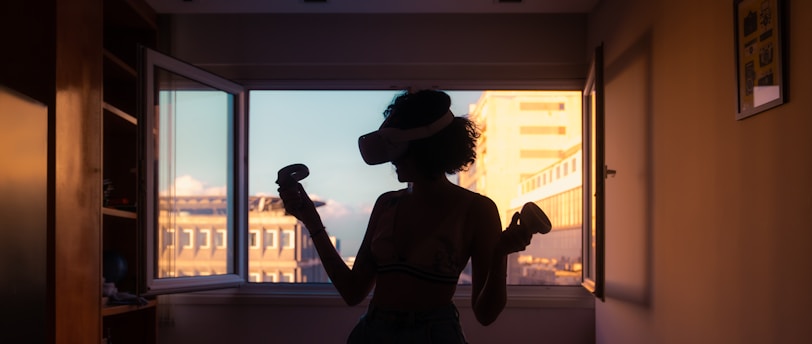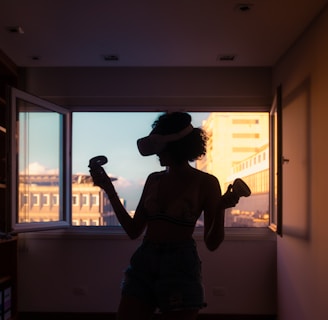Optimizing Websites for a Mixed Reality Future: A Guide for VR/MR Headsets
When we create websites we think about making them mobile firendly, but what about making them VR or Mixed Reality Friendly? Some websites might not need a lot of changes but some others do. In this article, I discuss some of the things to consider.
MIXED REALITYWEB
12/8/20232 min read


In the ever-evolving landscape of technology, the emergence of mixed reality (MR) headsets like Meta's Quest 3 and Apple's Vision Pro signals a paradigm shift in how users interact with digital content. As these devices extend beyond gaming and become integral to daily activities, web designers and developers must consider optimizing websites for Virtual Reality and Mixed Reality Headsets. In this article, we'll explore key considerations and strategies for creating user-friendly websites in the age of mixed reality.
1. Responsive Design for VR/MR:
Font Sizes and Readability: Adjust font sizes for comfortable readability in VR environments. Test different sizes to find the optimal balance between legibility and user comfort.
Column Distribution: Unlike traditional web layouts, VR/MR experiences may benefit from simplified and well-distributed content columns. Avoid clutter and ensure a seamless flow of information.
2. Layout Optimization:
Adaptability: Implement adaptive layouts that respond to the user's field of view. Optimize for different screen sizes and resolutions to provide a consistent experience across VR/MR devices.
Breakpoints: Define breakpoints specifically for VR/MR devices to ensure smooth transitions between different screen orientations and resolutions.
3. Navigation and Interaction:
Intuitive Navigation: Design user interfaces that facilitate intuitive navigation in a three-dimensional space. Consider spatial cues and gestures for interactive elements.
Voice Commands: Explore the integration of voice commands to enhance user control and accessibility. This can be particularly useful when typing or traditional input methods may be challenging in VR.
4. Multimedia Optimization:
360-Degree Content: Embrace 360-degree images and videos to leverage the immersive capabilities of VR/MR headsets. Ensure these elements enhance the user experience rather than causing distraction.
Optimized Media Playback: Fine-tune media playback settings to deliver smooth and high-quality experiences. VR/MR users often engage with multimedia content, so optimizing playback is essential.
5. Performance Considerations:
Load Times: Prioritize fast loading times to minimize wait periods in VR/MR environments. Optimize images and assets for quick loading without compromising quality.
Frame Rate Optimization: Maintain a consistent and high frame rate to prevent motion sickness and ensure a comfortable viewing experience.
6. User Testing and Feedback:
VR/MR User Testing: Conduct usability testing specifically for VR/MR users to gather insights into their preferences and pain points.
Feedback Mechanisms: Implement mechanisms for users to provide feedback on their VR/MR experience. This information can be invaluable for continuous improvement.
As technology continues to advance, the optimization of websites for VR/MR headsets will become an increasingly important aspect of web development. By proactively addressing the unique challenges and opportunities presented by mixed reality, web designers and developers can ensure that their content remains accessible and enjoyable in this immersive digital landscape.
As a marketing professional and web developer passionate about navigating this uncharted territory, I am committed to pushing boundaries, experimenting with innovative solutions, and sharing best practices to shape the future of VR/MR web experiences.
Stay connected with me on social media to embark on this exciting journey together. Follow for insights, updates, and a front-row seat to the latest discoveries in the ever-evolving landscape of mixed reality web development. Let's build the future of the web, one immersive experience at a time.
Connect with me on Instagram and join the conversation on the intersection of technology, marketing, and the boundless possibilities of mixed reality. Together, let's pioneer the next chapter in the evolution of digital experiences.

